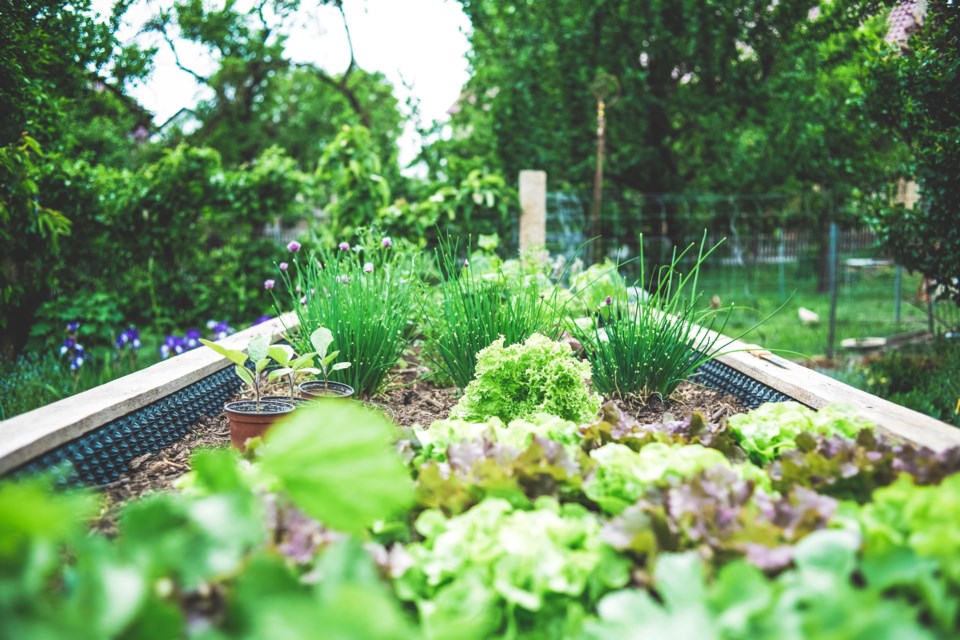As Canadians find themselves grappling with the ever-increasing price tags on their grocery bills, a remarkable trend is sprouting across the nation.
The cost of food has become a prevalent concern for Canadians over the past five years, with no signs of abating in 2022, according to research from The Canadian Centre for Food Integrity. Last year alone, a staggering 69% of Canadians were troubled by the rising cost of food, while 56% fretted over the affordability of wholesome nourishment.
However, an inspiring response to this predicament has emerged—a green revolution is taking root as more individuals turn to the age-old art of gardening to combat these escalating prices. A recent study conducted by the Agri-Food Analytics Lab at Dalhousie University unveiled that one in every five Canadians has taken up the rewarding endeavour of cultivating their own food at home within the past three years.
"Canadians have weathered financial strains in recent times, with skyrocketing food prices leading the way. Consequently, an increasing number of people are seeking solace in growing their own food at home," explains Paul Lefebvre, the new product development manager at Premier Tech Home & Garden—a renowned Canadian manufacturer and marketer of consumer lawn and garden products.
Beyond its potential to alleviate financial burdens, home gardening holds the promise of enhancing food security, even within urban landscapes. While the issue of food security remains complex and multifaceted, the act of tending to a personal garden can offer a lifeline to those in need of nourishment.
Similar to farmers, home gardeners possess a repertoire of tools at their disposal, including a diverse range of biological, organic, and synthetic pesticides to safeguard their precious crops from the ravages of insects, weeds, and diseases.
"Canada boasts some of the most stringent regulations and legislation pertaining to the evaluation of pesticides," notes Lefebvre. "Government regulatory agencies worldwide closely scrutinize our approach to pesticides to ensure their safety and effectiveness."
So, whether you are an experienced green thumb or embarking on the exciting journey of planting your very first vegetable seeds and saplings this year, take pleasure in the abundant rewards that await you.
With each harvest, not only will you savour the fruits of your labor, but also the sweet taste of victory over soaring food costs.
If you're eager to embark on your own gardening journey this year, be sure to explore these invaluable home gardening tips to set yourself up for success.
Growing Herbs Indoors: Take cuttings of fleshy herbs like mint and basil, grow them in water on a bright windowsill, and transplant them into potting mix once they develop roots.
Using Hoops for Watering: Thread a hose pipe through croquet hoops to avoid flattening crops and flowers while watering different parts of the garden.
Utilizing Prunings and Branches: Keep thinner, twiggier prunings and branches to support climbing plants like peas and to deter cats and pigeons from damaging seedlings.
Companion Planting with Nasturtiums: Plant trailing nasturtiums alongside beans to attract pollinators and act as a trap crop for black bean aphids and cabbage white butterflies.
Sow Extra Seeds as Insurance: Sow additional seeds in a separate pot or tray as a backup in case the main sowing gets damaged or destroyed, and share extra seedlings with friends and family.
Maintenance of Gardening Tools: Keep tools oiled and dry to prevent rusting. Wipe them down with an old rag and store hand tools in a bucket of dry sand for easy access.
Using a Sheet or Tarpaulin for Leaf Collection: Use an old bed sheet or tarpaulin to gather leaves or collect spiky prunings in large areas of the garden.
Checking Seed Viability: Check the sow-by date of seeds and perform a germination test by placing seeds on damp kitchen towel, observing germination after a week, and reusing seeds with a germination rate above 50%.
Weeding after Rain: Take advantage of rainstorms or wet weather to make weeding easier by removing weeds along with their roots from moist soil.
Marking Slow-to-Germinate Seeds: Use a string line to mark the rows of slow-germinating seeds like parsnips, allowing for easy weed control without disturbing the seedlings.
These gardening hacks can save time, improve productivity, and enhance the overall gardening experience!




